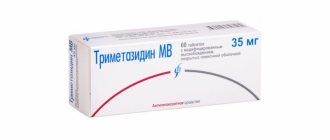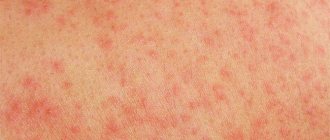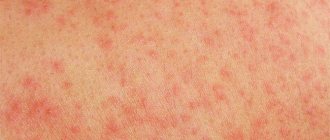Runny nose, itching, hives, swelling, headache and conjunctivitis are not all the symptoms that are observed during allergies. The cause of an allergic reaction can be food, pollen, dust, mold, or animal dander. Allergy symptoms can be caused by various substances, even simple water.
In different countries, the frequency and manifestation of the disease vary dramatically due to the peculiarities of the climatic conditions of the region, the environment, traditions and habits of local residents. The disease can appear at any age, and anything can trigger its appearance.
How long can you take anti-allergy medications?
Allergy symptoms can last for a long time, so taking antihistamines usually lasts a long time.
Often one type of medication does not bring the expected result, so you have to additionally combine other drugs. It may take several weeks to several months to take the medications.
To select the right combination of medications, an allergist must conduct a skin test. To do this, the patient is given a needle containing various types of allergens. Based on the reaction obtained, a conclusion is made; the results of the study help to identify the exact allergen and select the appropriate medications.
Zodak is an excellent remedy against allergies.
Useful habits
Patients with pollen allergies are advised to wear medical or gauze masks and sunglasses while outdoors, the doctor said.
“And when you come home, it’s better to immediately take off the clothes you wore outside, wash your face and, if possible, take a shower. It is advisable to wash your hair to get rid of particles that could get on it,” recommended Mukhina.
However, according to the expert, air purifiers can be used at home. All these methods will help reduce the adverse effects of pollen, the interlocutor of Moscow 24 emphasized.
Is there a chance to completely get rid of allergies?
There are quite a few cases where the disease was completely overcome. For example, you can get an allergy vaccine. An allergenic substance is introduced into the human body, the dose of the drug increases each time. The technique allows the body to develop an addiction, when a real situation of collision with an allergen occurs, there are usually no consequences.
Today there is a painless treatment method that can help eliminate allergies. Taking antipollin and allergen drugs intended for sublingual immunotherapy of allergic diseases has an equally positive effect.
Allergic conjunctivitis. Folk remedies and recipes.
In addition to medications, cold compresses can help treat inflammation of the mucous membrane around the eyes. Soak a clean towel in ice water or place teaspoons in the freezer and apply to your eyes.
The already mentioned aloe extract copes well with inflammation of the conjunctiva. Moisten a clean swab, cotton pad, or piece of gauze with the juice and apply (like a compress) to your eyes and leave for five to ten minutes.
You can also prepare a fairly effective solution from aloe. Take a few freshly cut leaves of the plant, put it in a container and pour boiling water over it. Wait until the temperature of the liquid drops to a comfortable level (room temperature or slightly higher) and rinse your eyes with it. To achieve maximum effectiveness, the procedure should be repeated three to four times a day.
Swelling of the eyelids, which occurs with chronic conjunctivitis, can be treated with compresses made from ordinary tea leaves. Brew strong (but not too strong) black tea, cool it to a comfortable temperature, and soak cotton pads in it. They should be placed on the eyes for no longer than twenty minutes. Repeat the procedure four to five times a day.
How to cure a child from allergies
Children suffer from allergic diseases no less than adults. There is a sufficient number of facts proving that as children grow older, they can outgrow allergies, and the experts themselves do not deny this. With age, the allergic background and protective properties of the body change as the baby grows.
What can cause allergies
Often, for the youngest children, the source is excessive adherence to hygiene standards. One of the most common causes is sterile conditions.
Allergies can be caused by taking antibiotics, so it is extremely undesirable to give them to babies under one year of age.
In order to reduce allergy symptoms in a child, you should not immediately take synthetic drugs; it is better to use traditional recipes, since they are safe, unlike drops, tablets and ointments.
Usually, taking fructose in large quantities causes an allergic rash on the baby's body. Although many parents believe that eating a lot of healthy vitamins is beneficial, this is still a misconception. If the reaction to large portions of sweets becomes too violent, you will have to first reduce the dose; if no changes are observed, completely eliminate it from the diet.
The myth of poplar fluff: what actually causes the spring flare-up?
Many patients who turn to a good paid therapist for help, when collecting an anamnesis, name poplar fluff as the cause of their condition. In fact, in itself it very rarely causes hay fever, but it contributes to the transfer of pollen from a number of allergen plants. The list of them varies for different Russian regions, differing in the dates of the arrival of climatic spring and summer.
- From April to May, allergies can be caused by pollen from flowering trees and shrubs - birch and alder, willow and poplar, beech and maple, oak and chestnut, hazel, elm and ash.
- In the late spring and summer months, cereal plants bloom successively - wheat and rye, timothy and fescue, ryegrass and bluegrass, wheatgrass and foxtail.
- In autumn, hay fever is caused by pollen from wormwood and quinoa, nettle and hemp, and in the southern regions the strongest allergen is ragweed finger.
Can allergies develop into asthma?
Two serious diseases often occur in parallel, causing the appearance of negative symptoms - allergies and asthma. An established allergic diagnosis requires special attention, since the characteristic symptoms of the disease can interfere with the proper functioning of the respiratory system. Therefore, the answer to the question posed is obvious - if allergies are not treated for a long time, it can develop into bronchial asthma.
After all the listed facts regarding allergies, it is important to choose the right treatment method in order to avoid serious complications.
The safest thing to do is contact an experienced specialist and follow simple rules.
Distribution of products by degree of allergenicity:
High:
cow's milk, fish, seafood, caviar, eggs, citrus fruits, nuts, honey, mushrooms, strawberries, raspberries, strawberries, blackberries, pineapples, melon, persimmons, black currants, chocolate, coffee, cocoa, mustard, tomatoes.
Average:
pork, red currants, potatoes, peas, rabbit, peaches, apricots, green peppers, corn, buckwheat, cranberries, rice, cabbage.
Low:
zucchini, squash, turnips, pumpkin, apples, bananas, white currants, gooseberries, plums, watermelon, horse meat, lamb, white cherries, cucumbers.
But we must not forget that everything is individual, sometimes an allergy occurs not to the product itself, but to chemicals, fertilizers, etc. that have found their way into the product.
Dealing with allergies is difficult
, but probably. Care and hard work are required. It is imperative to contact competent specialists. The main thing is to engage in prevention, find the cause of the allergy, if it has already manifested itself, and take action in time. Don’t forget that allergies are a problem of immunity, try to strengthen it by following the rules of a healthy lifestyle, exercise, exercise, avoid stressful situations (if this is impossible, then change your attitude towards them), and the most banal thing: simplify your diet, both in quantity and variety. It is appropriate to remember the proverb: “cabbage soup and porridge are our food,” but aspen crackers and kasu marzu... well, you can’t forbid living beautifully.
The article was prepared by the hygienic education group using: www med.vesti.ru, www medl.ru, www ria.ru www chel.Kr.ru, “Nursing” magazine 2013, N.P. Toropova “Zema and neurodermatitis in children »
Disease prevention
For preventive purposes, you need to follow a few simple recommendations:
- take antihistamines prescribed by your doctor;
- do not contact with the allergen;
- wear sunscreen;
- carry out daily wet cleaning of the premises;
- After visiting the street, wash your hands thoroughly and take a shower.
People of the older generation remember the antihistamine medications that used to be sold in pharmacies; after taking them, they immediately fell asleep. Modern types of medications do not have this effect; thanks to the wide range, you can easily select drugs taking into account the specific characteristics of allergies.
Of course, allergens should be avoided by everyone without exception who is susceptible to a negative reaction, since the consequences of an allergic reaction can be unpredictable, including anaphylactic shock.
Allergy school for patients
People suffering from allergies must not only be treated, they must also be trained and given knowledge about their disease, Elena Tuzlukova is sure. That is why the so-called allergy school was opened at the DETSTVO Plus clinic. Her students learn a lot about the nature of allergies, their causes, manifestations, gain practical skills that allow them to more fully and consciously follow medical recommendations, and also learn to create an environment in which they would be maximally protected from contact with allergens that irritate them.
“For example, a person is allergic to tree blossoms,” says Elena Tuzlukova, “and he washes his hair with shampoo containing natural birch extract, or goes to the bathhouse to steam with a birch broom, or uses eucalyptus tincture in the steam room for a pleasant aroma. Such familiar everyday situations can lead to the development of an acute allergic reaction, including an acute attack of bronchial asthma, which can develop in a matter of seconds. Such events can also occur outside the tree flowering season. But the person is not ready for this situation - he does not have any medicine with him. The task of an allergy school is not only to teach a person to help himself in such situations, but, first of all, of course, to avoid getting into them at all. The average person has no idea how complex and multifaceted the topic of allergic diseases is. Under certain conditions, a threat to an allergy sufferer can come even from completely ordinary food products (and we are not talking about food allergies!), you need to know about these threats and be able to recognize them.
The next course at the allergy school begins as the group is recruited, which usually includes three to four people. The course consists of four lectures; class times are scheduled by agreement with student-patients. The form of the classes implies constant contact with teachers - Elena Tuzlukova herself is interested in students asking her as many questions as possible, getting to know and understand their illness better, and therefore learning to live with it.
Text by Pavel Chukaev, photographs by Vasily Povolnov
Date of publication: November 26, 2013 | Date modified: 08/20/2014
Types of allergies and methods of control
There are many types of allergies of different nature. The most common symptoms include nasal congestion, skin inflammation, and red eyes. However, less familiar symptoms may also appear.
For example, allergic swelling of the eustachian tube causes congestion in the ears and impairs hearing. As a result of swelling of the respiratory system, shortness of breath occurs. Eczema is quite difficult to treat and is often also a manifestation of an allergic disease.
One of the simple and affordable ways to treat allergies at home is to take antiallergic medications for 4-5 days. During the indicated period, it is worth monitoring your general well-being and pronounced symptoms. If their indicators decline, then the course of therapy has been chosen correctly.
Symptoms
Signs of an allergy can occur upon contact with the source of the allergy or during prolonged accumulation of the irritant in the body. The first option is most often found in children, since their immunity is not yet fully adapted to environmental influences.
Let's look at the main signs of allergies by category in the following table.
| From the outside | Manifestations |
| Respiratory organs | Dry cough or sore throat, swelling of the pharynx, difficulty breathing. Sneezing, mucus discharge from the nasal passages, nasal congestion, which can develop into chronic rhinitis, rhinosinusitis, tracheitis. |
| Circulatory system | Changes in the number of leukocytes. The appearance of hives, eczema and other skin rashes. |
| Gastrointestinal tract (allergic enteropathy) | Dehydration, upset stomach, nausea or vomiting. |
| Mucous eye | Lacrimation, allergic conjunctivitis (both primary and secondary). |
In rare cases, allergies manifest themselves in the form of loss of consciousness, anaphylactic shock, Quincke's edema, etc.
Such symptoms are not always the result of an allergy. In order to make an accurate diagnosis, consult your doctor, he will refer you for tests.
Are allergy sufferers born or made?
Photo: depositphotos/AllaSerebrina
Allergy is a pathology with a hereditary predisposition, the doctor said. If both parents suffer from allergies, there is a 40–60% chance that their child will also have one.
If only one parent has an allergy, then the probability is slightly lower, but in any case the percentage is quite high. And the probability of having a child with allergies in absolutely healthy people is approximately 10–15%. Olga Mukhina
allergist
At the same time, according to the doctor, in the case of a genetic predisposition, the further manifestation of allergies is influenced by the conditions in which the child grows up.
“It is impossible to prevent allergies in a child, but there is an absolutely proven way to prevent or reduce the likelihood of allergic reactions - breastfeeding. Also, the mother should avoid smoking – both active and passive,” the expert added.
In addition, during complementary feeding it is very important not to limit the child’s food intake, the doctor emphasized.








